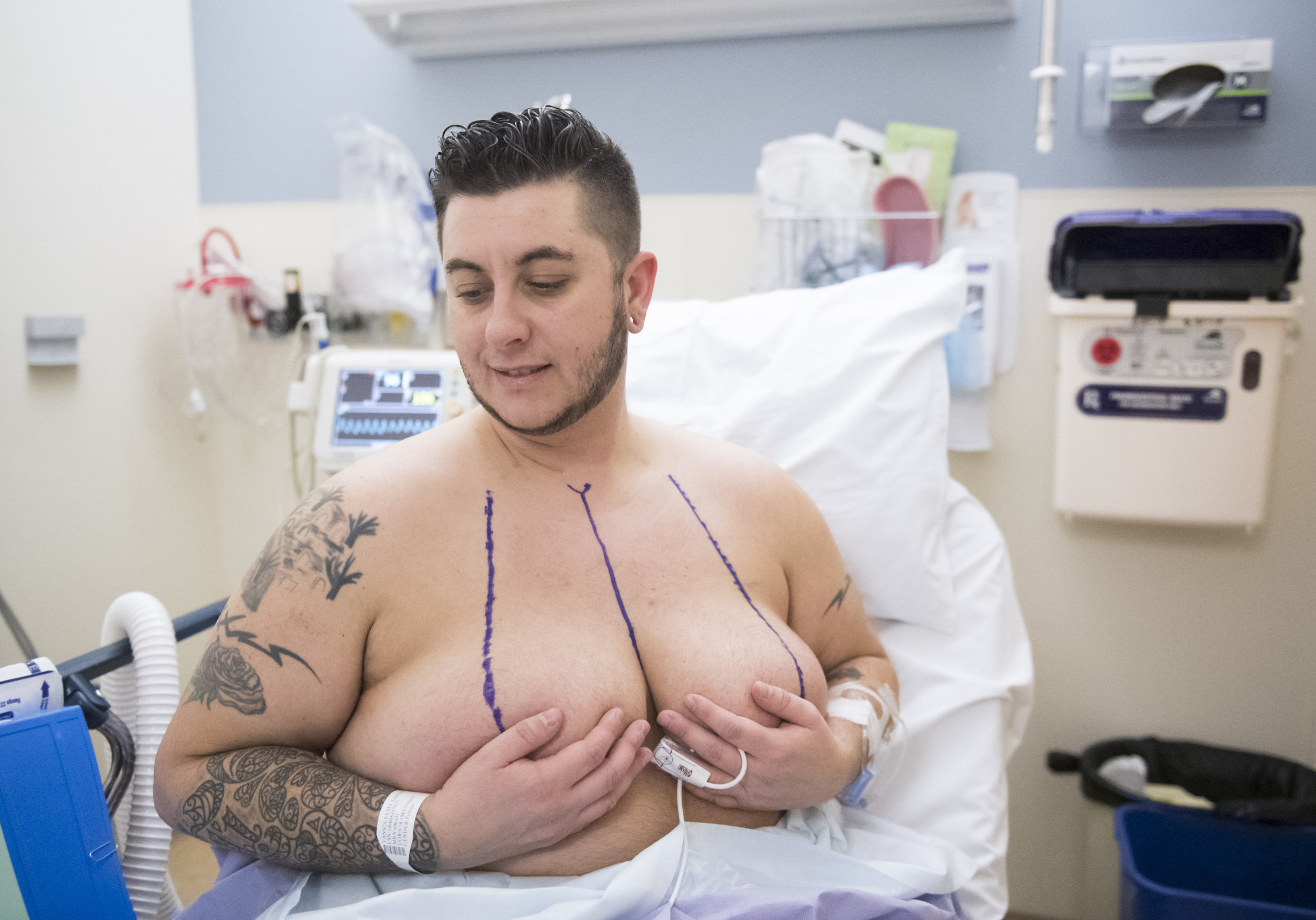
Beau VanSolkema has always envisioned himself being a father or a husband to someone. Even if the rest of the world saw him as a mother or wife.
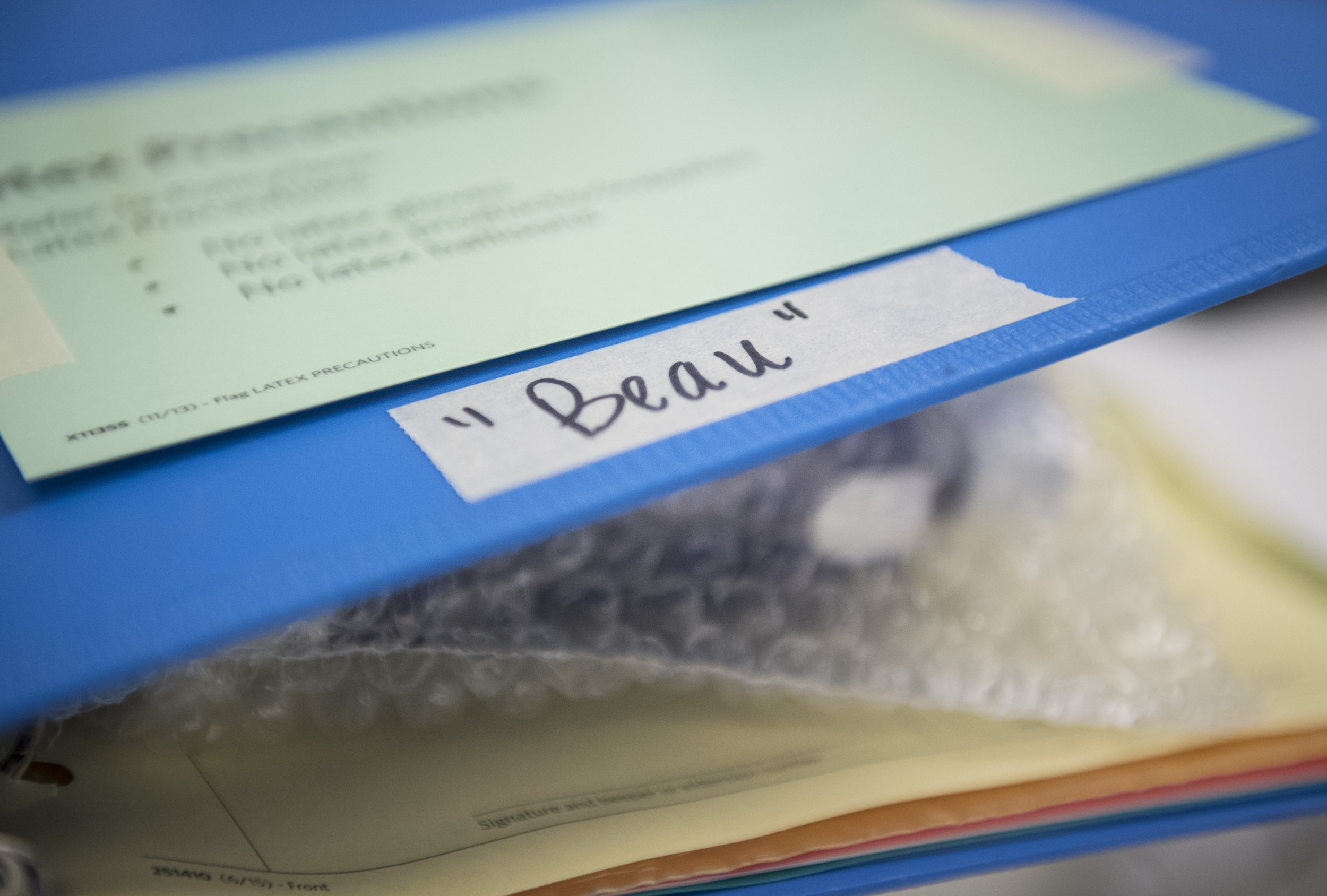
By his teen years, he identified as a lesbian. Through therapy and advocacy work, he came to realize he was transgender. “I was born Sarah,” he said. “I’m not going to change those moments, nor would I try.”
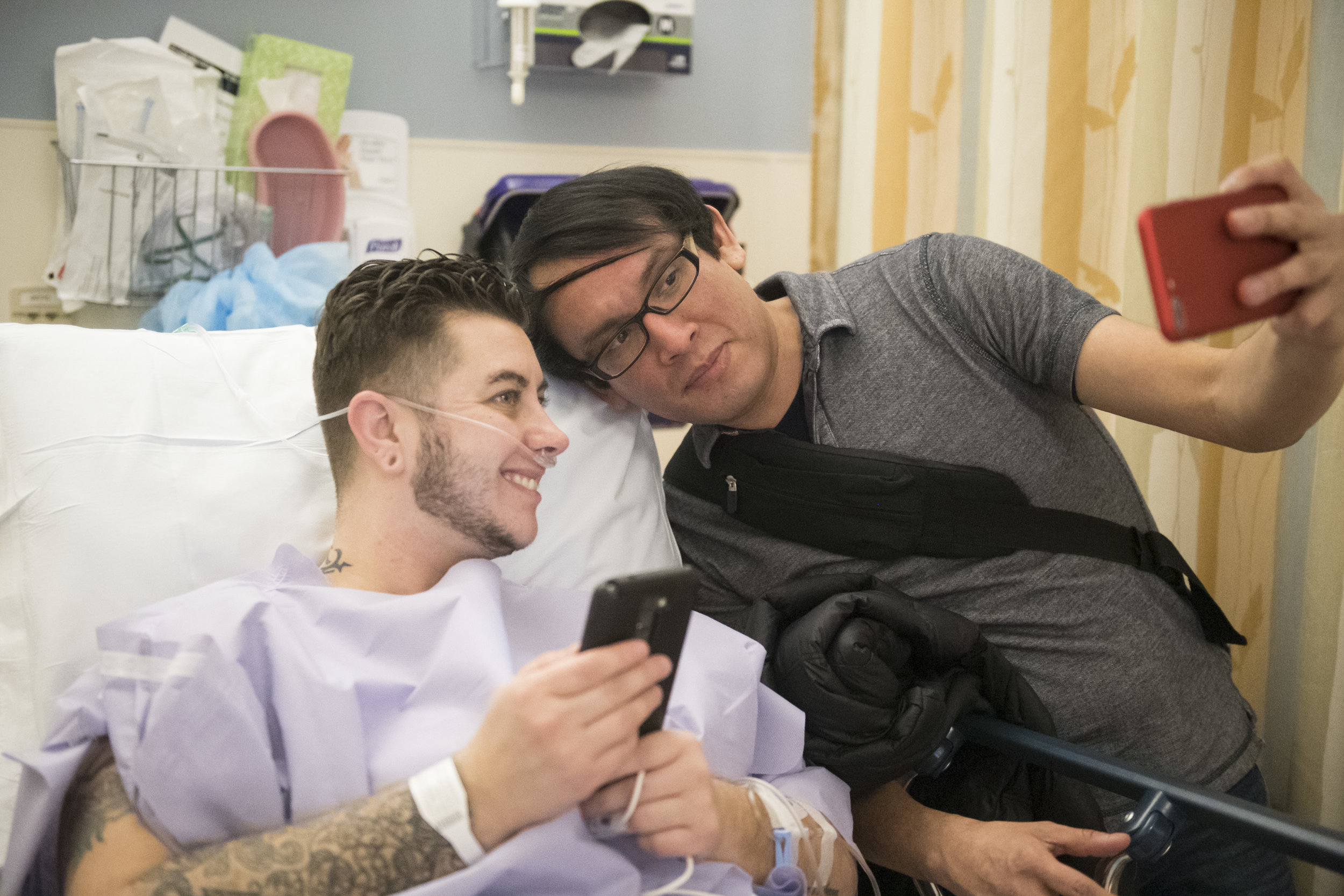
Before surgery, patients receive counseling for gender dysphoria—a term that encompasses the distress they feel over the mismatch between their identities and their bodies. They obtain letters of support from mental health professionals.
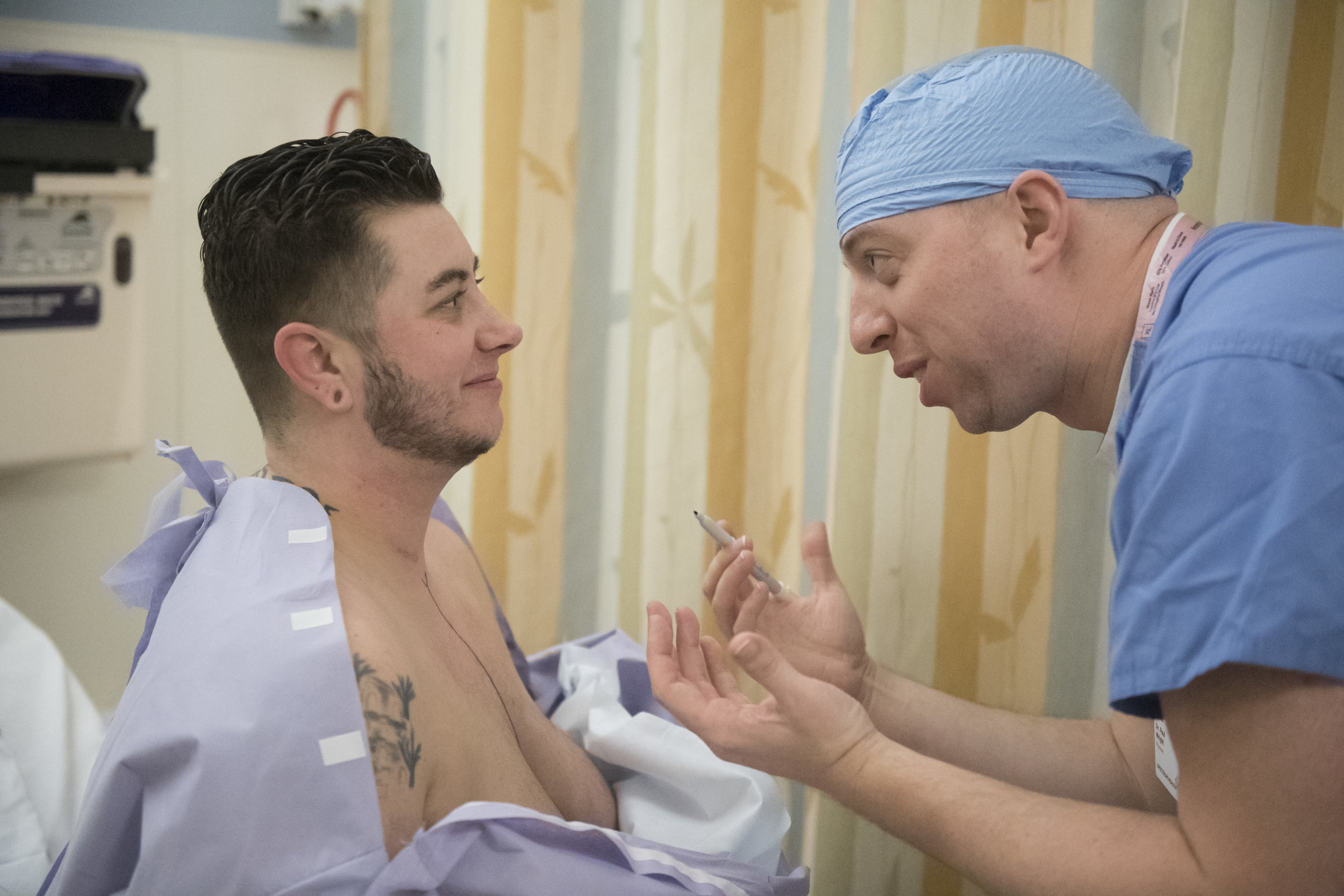
The practice manager for advanced breast care, who also leads the Healthy Pride Inclusion Resource Group at Spectrum Health asked Paul Wright, MD, if he would consider performing mastectomies for transgender patients.
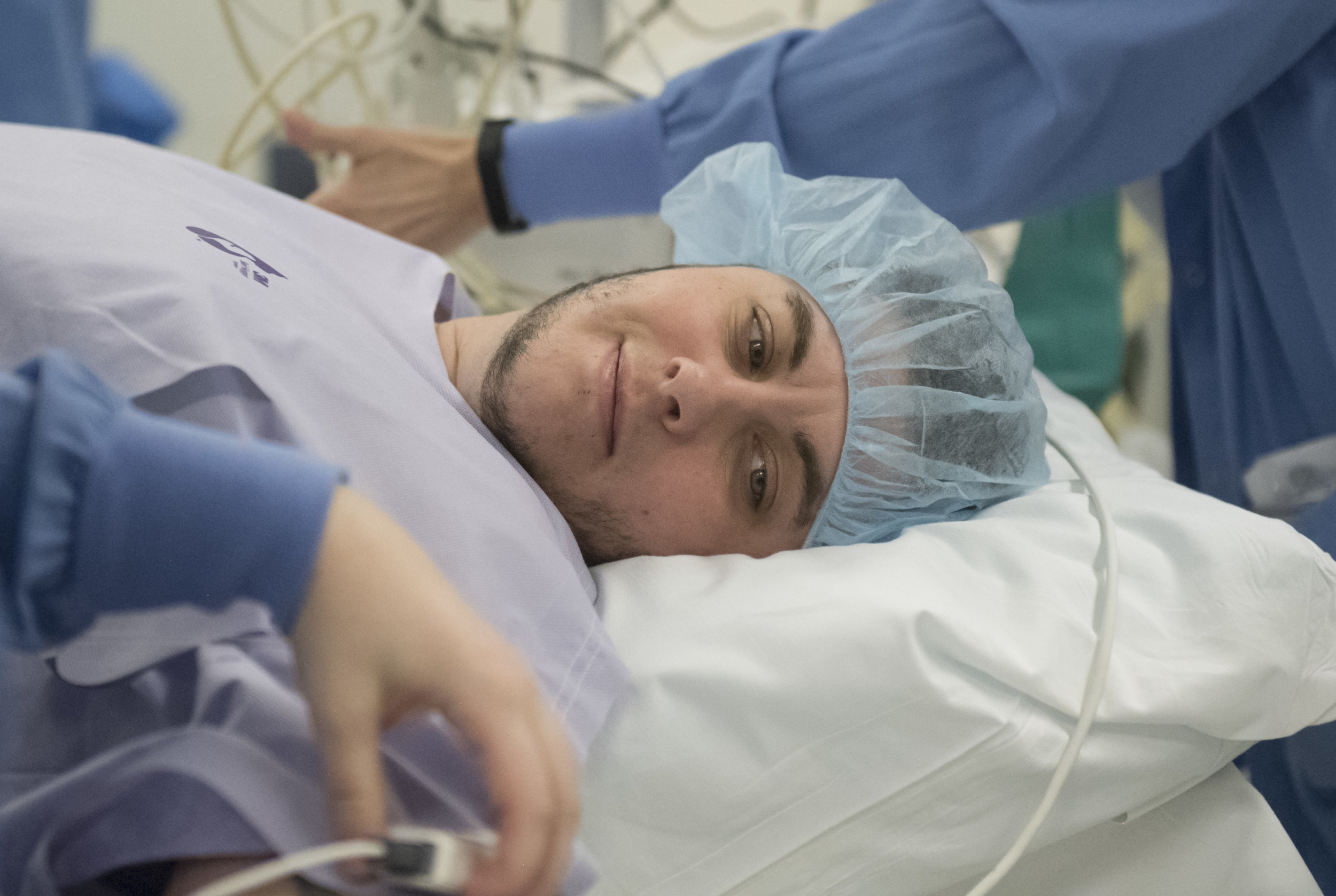
"It's about matching your inside to the outside," Beau said. "I'm a 38 triple-D, so it's hard to hide."
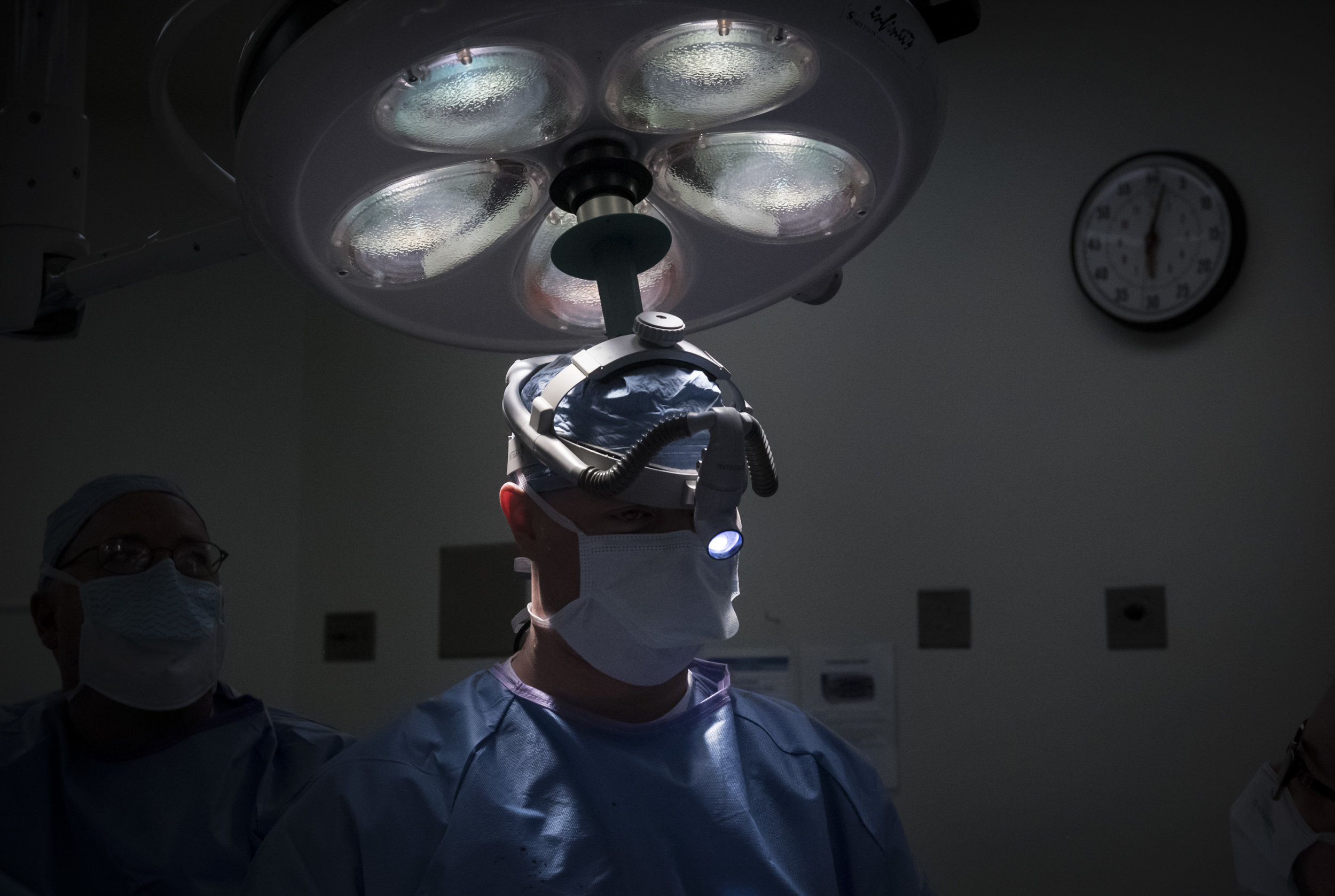
Dr. Wright agreed to perform the operations after he researched the technical aspects involved. “I realized it’s not that much different from a traditional mastectomy for breast cancer,” he said. “it has been tremendously rewarding to be part of these surgeries (for transgender patients). It’s really life-changing for them. It’s something a lot of these patients have been struggling with, in how they view their body and their self-esteem, for a long time.”
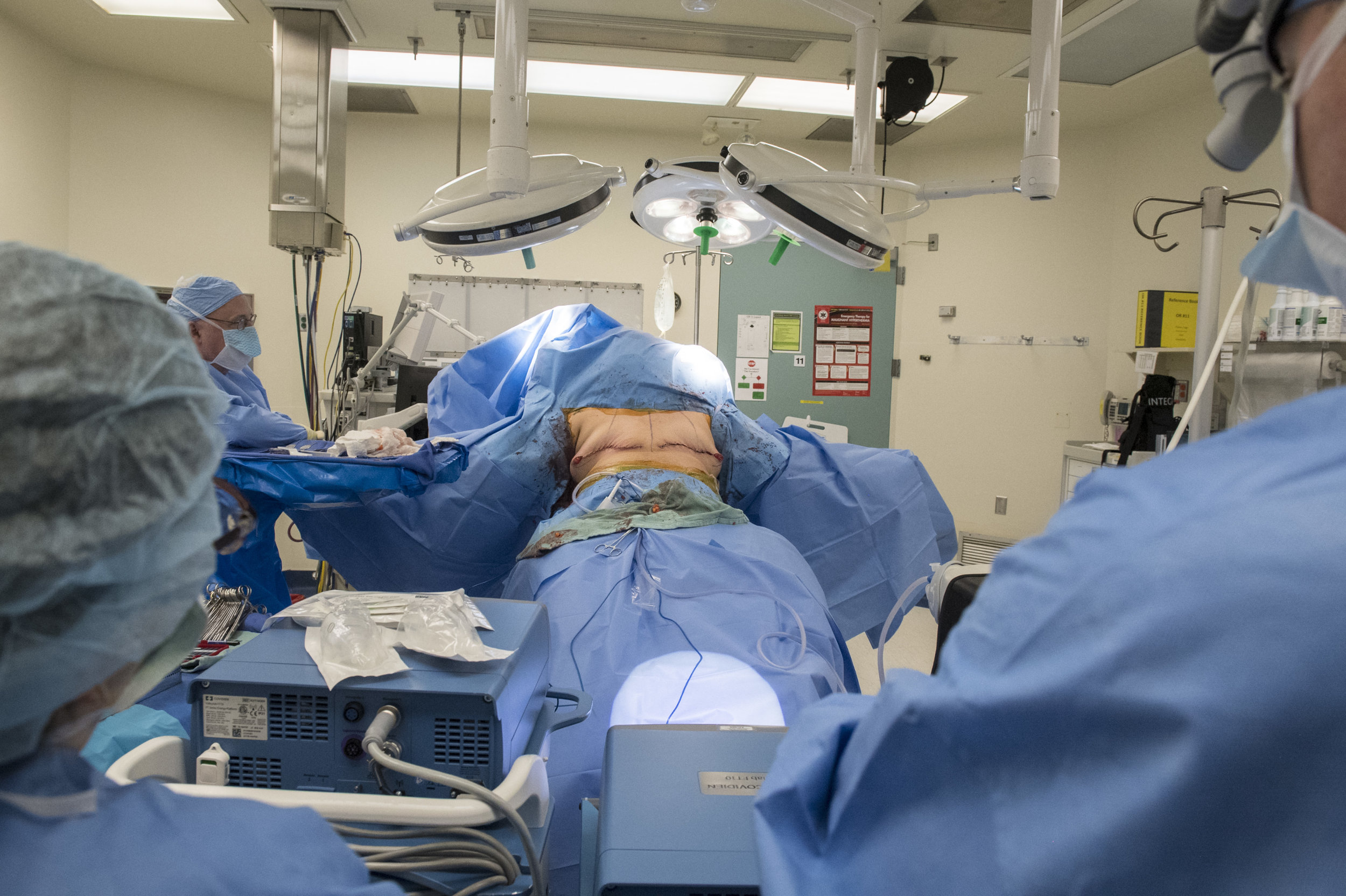
In the four-hour procedure, Dr. Wright removed breast tissue. At several points in the operation, he had VanSolkema raised to a seated position, as he does with all mastectomy patients, to see if he needed to remove more tissue or skin.
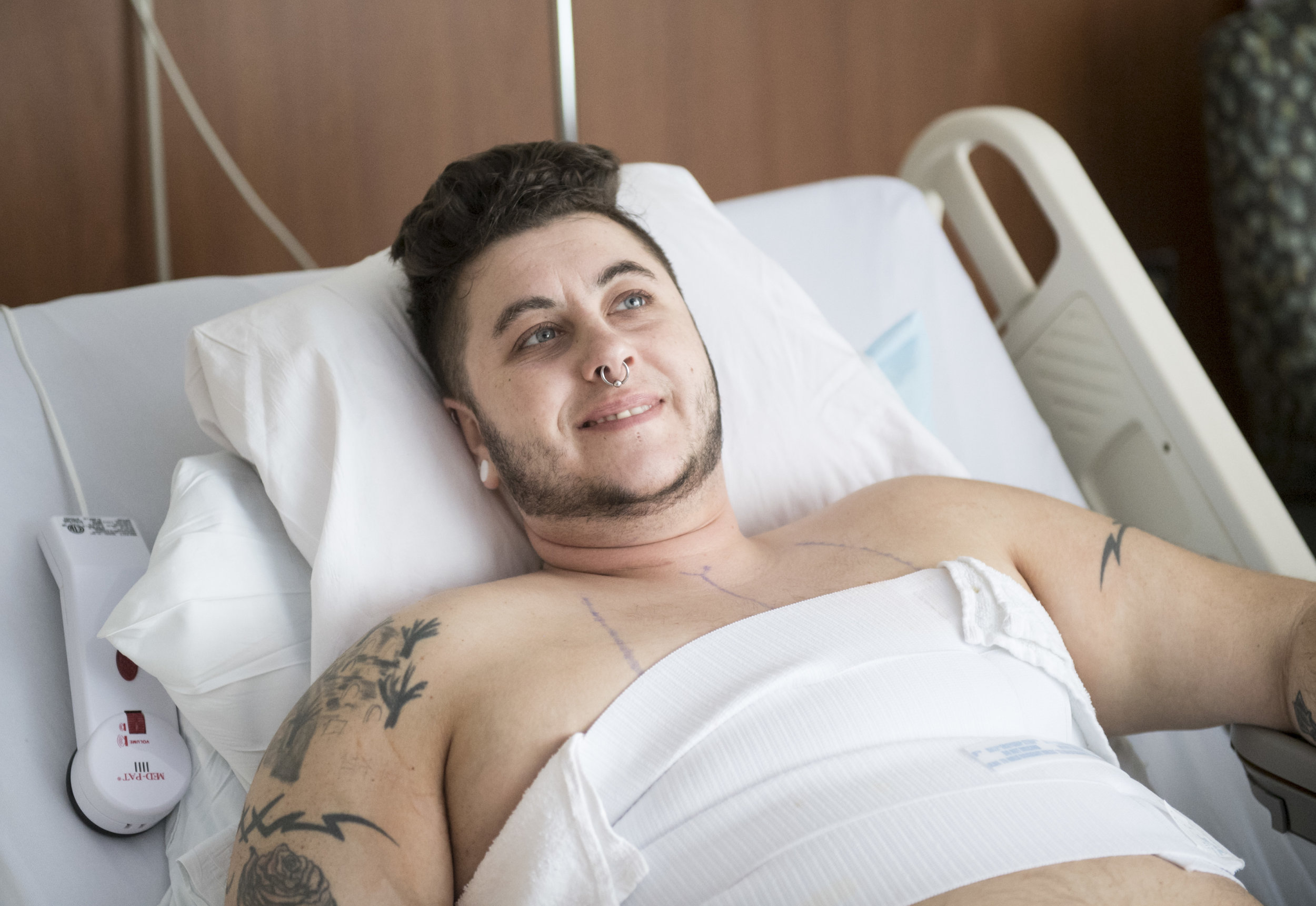
Beau felt transformed after his surgery. “I don’t even have words for it,” he said. “I can definitely say my insides are matching my outsides more and more.”
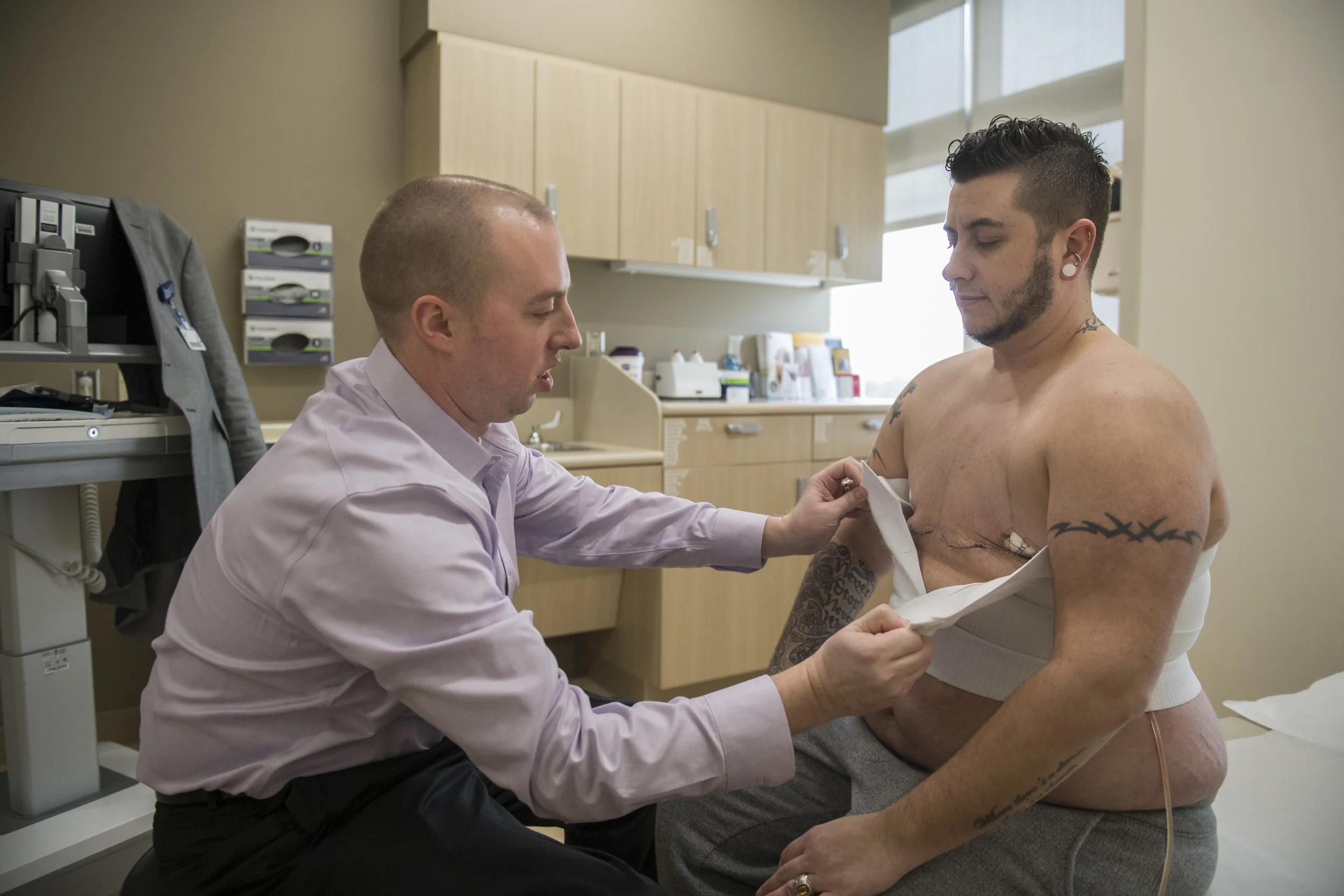
Dr. Wright removes the binder for the first time to see how Beau’s chest is healing.
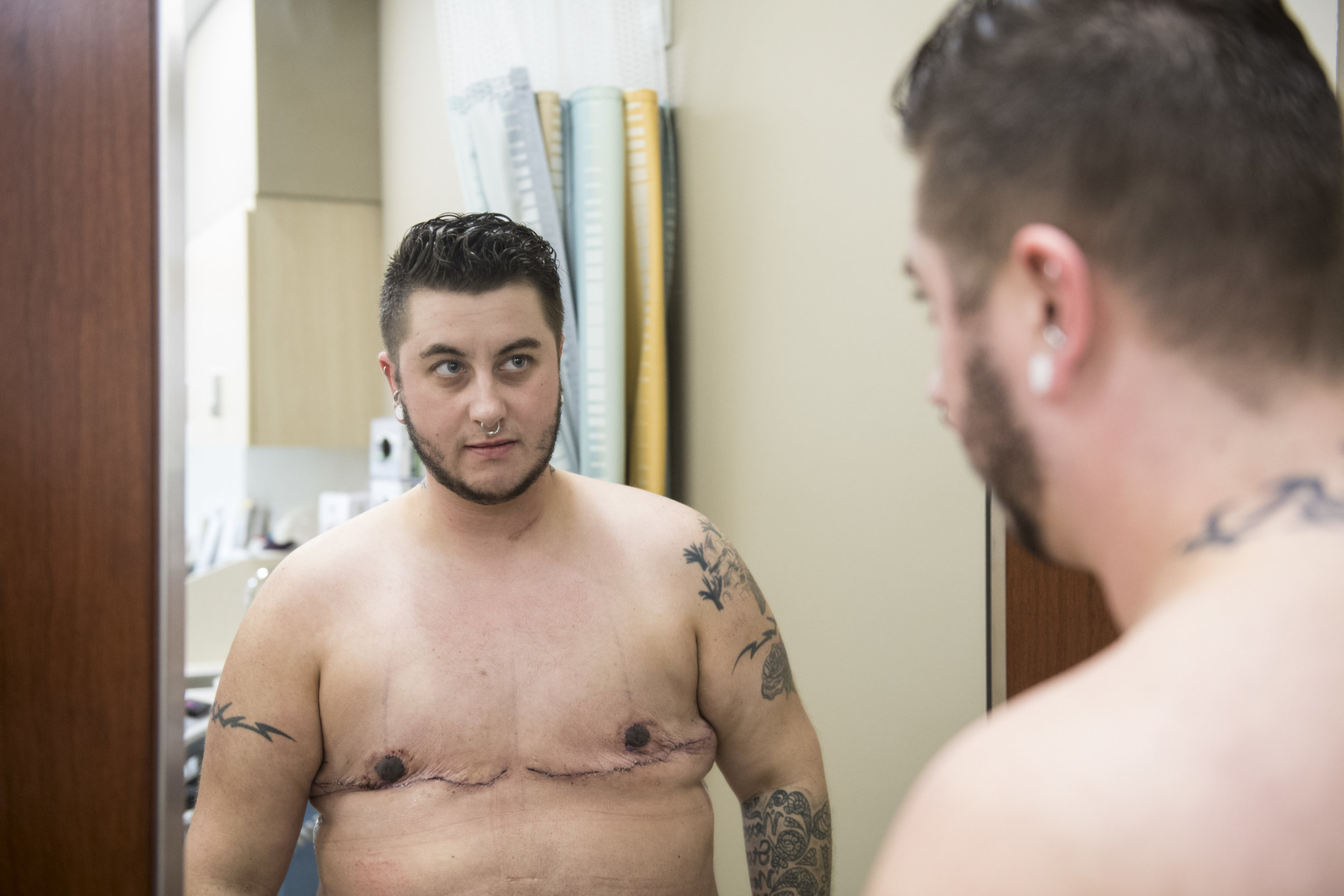
Beau looks at himself for the first time without breasts. “For the first time in my life, I can exhale—not just breathe to live, but to really let it out, because my autonomy in many ways is complete. I’m not just breathing and existing in a body I never requested.”
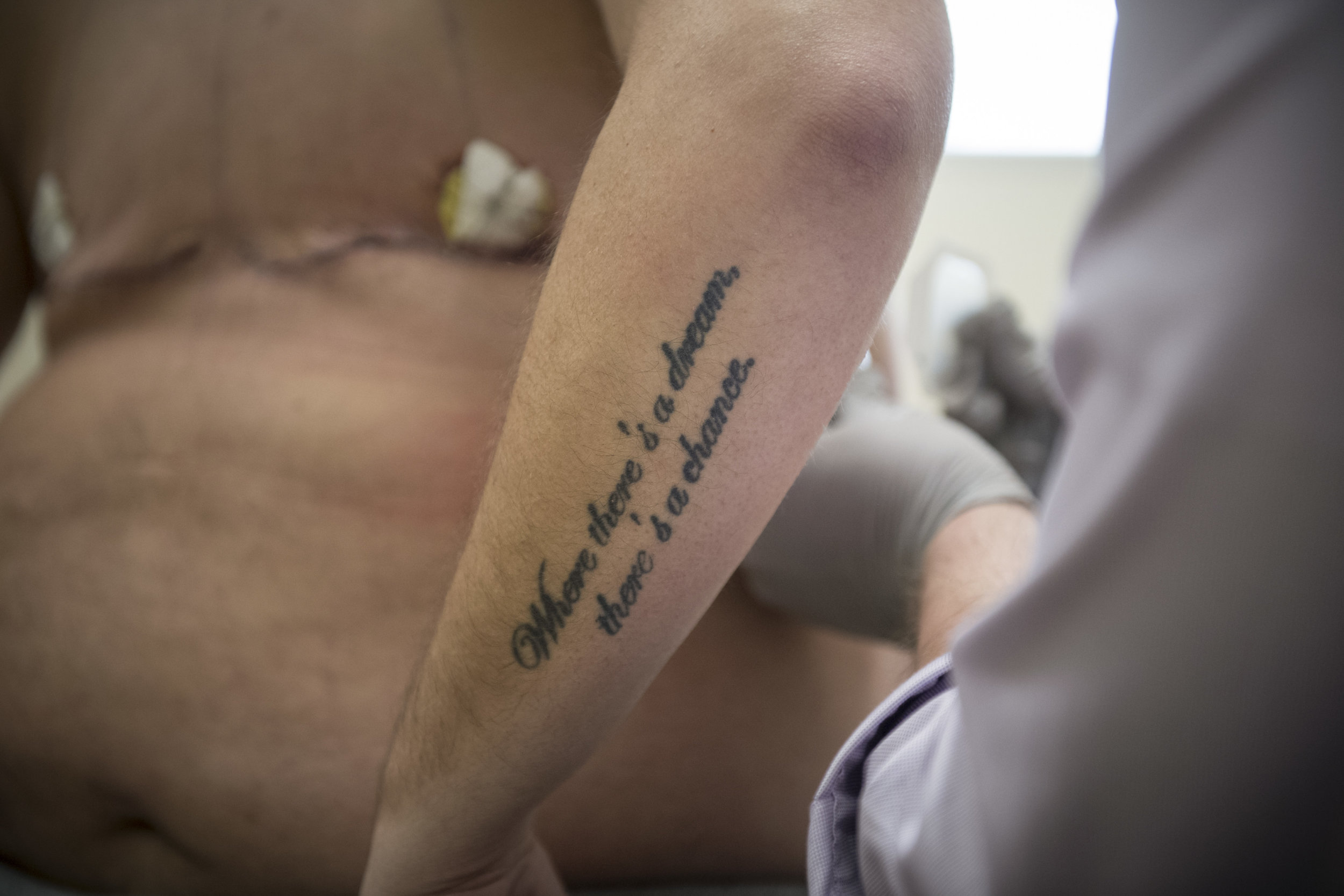
A tattoo on Beau’s arm reads "where there's a dream, there's a chance."
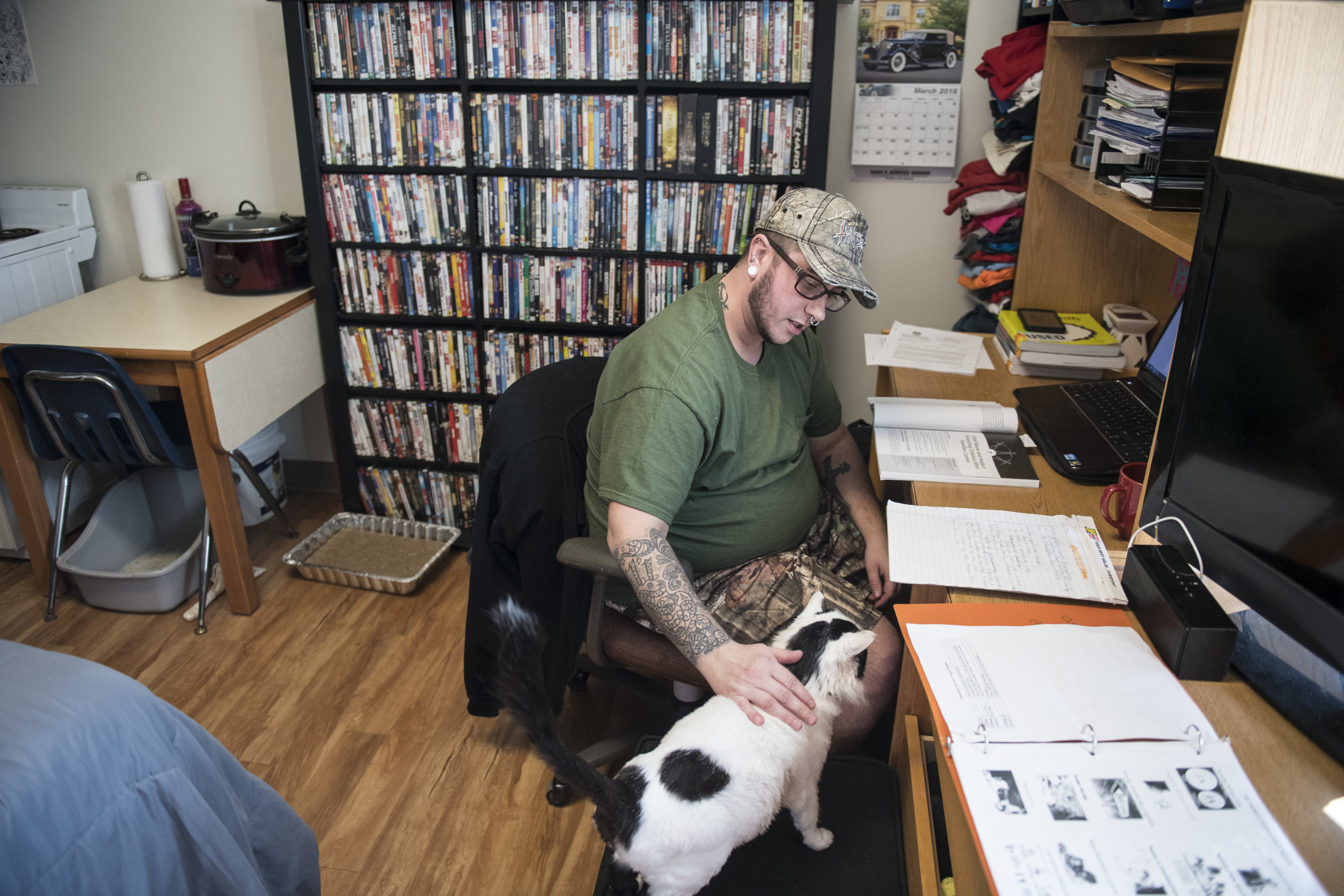
Beau studies in his apartment before his finals begin at Grand Valley State University. He is studying to become a social worker to eventually help LGBTQ people.
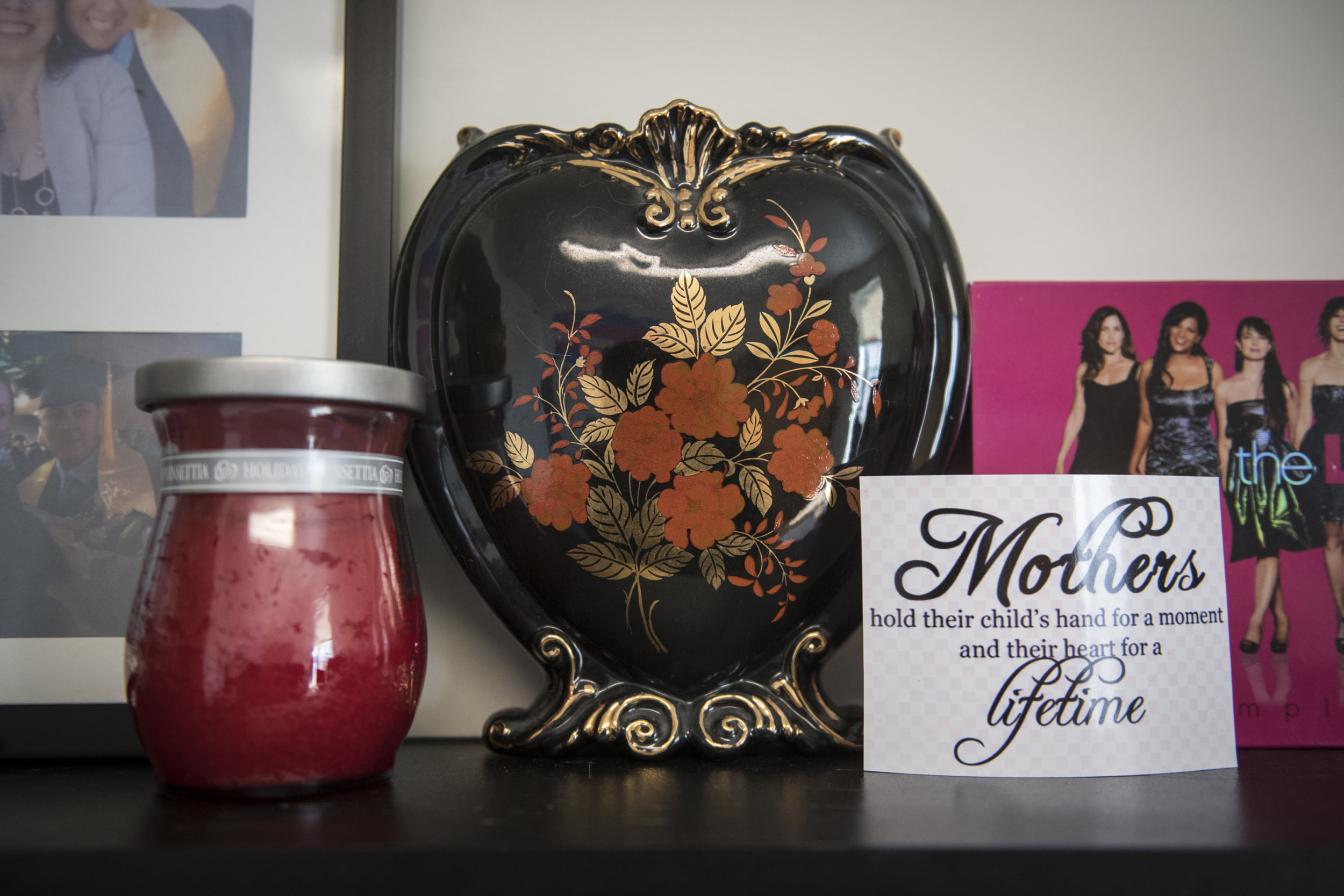
Before beginning the transition from female to male, he told his mother about his decision. It was December 2015, and she was fighting the uterine cancer that would claim her life a month later. She told him, “No matter what you do in this world and your life, I’m always going to love you.”
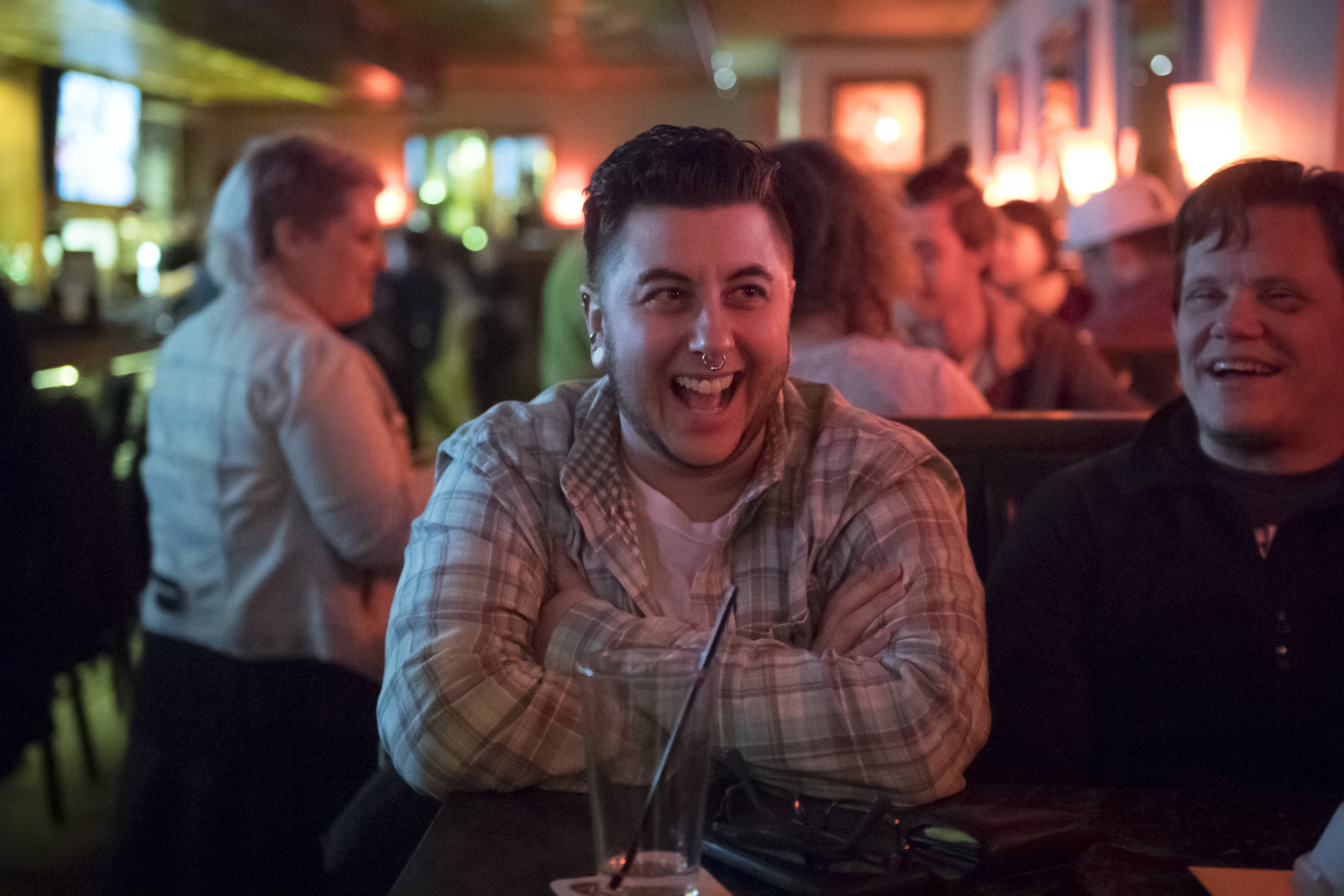
“I’m really happy,” he said as he recovered from the surgery. There’s definitely a smile on my face that has lasted for days.”
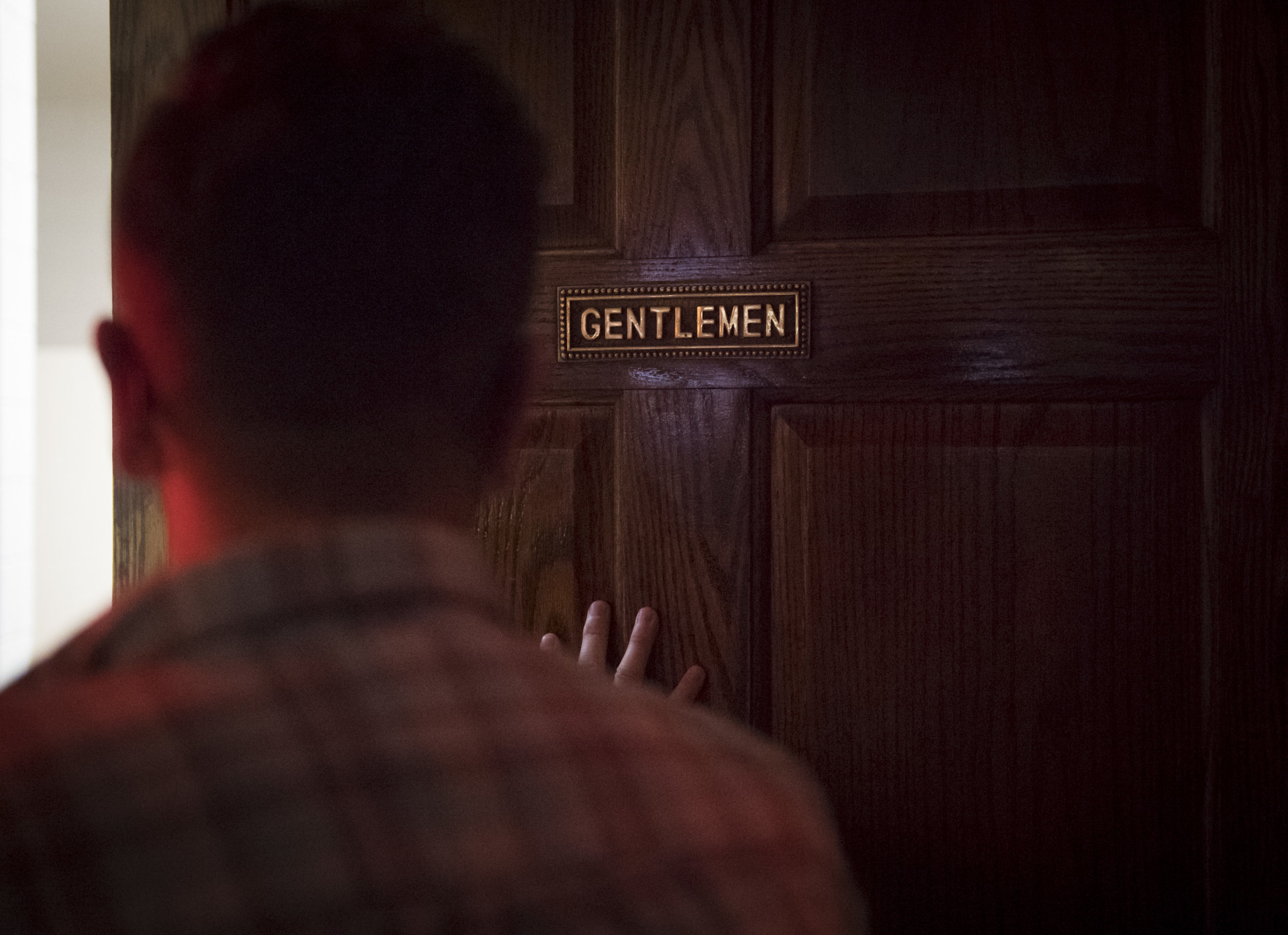
Beau continues to advocate for trans people and shares his story to inform trans people that they are not alone and that they have options within the community. “I feel more comfortable,” he said. “There’s a little difference in confidence I’ve noticed. I definitely feel more like Beau and the man I know I was born to be.”















Beau VanSolkema has always envisioned himself being a father or a husband to someone. Even if the rest of the world saw him as a mother or wife.
By his teen years, he identified as a lesbian. Through therapy and advocacy work, he came to realize he was transgender. “I was born Sarah,” he said. “I’m not going to change those moments, nor would I try.”
Before surgery, patients receive counseling for gender dysphoria—a term that encompasses the distress they feel over the mismatch between their identities and their bodies. They obtain letters of support from mental health professionals.
The practice manager for advanced breast care, who also leads the Healthy Pride Inclusion Resource Group at Spectrum Health asked Paul Wright, MD, if he would consider performing mastectomies for transgender patients.
"It's about matching your inside to the outside," Beau said. "I'm a 38 triple-D, so it's hard to hide."
Dr. Wright agreed to perform the operations after he researched the technical aspects involved. “I realized it’s not that much different from a traditional mastectomy for breast cancer,” he said. “it has been tremendously rewarding to be part of these surgeries (for transgender patients). It’s really life-changing for them. It’s something a lot of these patients have been struggling with, in how they view their body and their self-esteem, for a long time.”
In the four-hour procedure, Dr. Wright removed breast tissue. At several points in the operation, he had VanSolkema raised to a seated position, as he does with all mastectomy patients, to see if he needed to remove more tissue or skin.
Beau felt transformed after his surgery. “I don’t even have words for it,” he said. “I can definitely say my insides are matching my outsides more and more.”
Dr. Wright removes the binder for the first time to see how Beau’s chest is healing.
Beau looks at himself for the first time without breasts. “For the first time in my life, I can exhale—not just breathe to live, but to really let it out, because my autonomy in many ways is complete. I’m not just breathing and existing in a body I never requested.”
A tattoo on Beau’s arm reads "where there's a dream, there's a chance."
Beau studies in his apartment before his finals begin at Grand Valley State University. He is studying to become a social worker to eventually help LGBTQ people.
Before beginning the transition from female to male, he told his mother about his decision. It was December 2015, and she was fighting the uterine cancer that would claim her life a month later. She told him, “No matter what you do in this world and your life, I’m always going to love you.”
“I’m really happy,” he said as he recovered from the surgery. There’s definitely a smile on my face that has lasted for days.”
Beau continues to advocate for trans people and shares his story to inform trans people that they are not alone and that they have options within the community. “I feel more comfortable,” he said. “There’s a little difference in confidence I’ve noticed. I definitely feel more like Beau and the man I know I was born to be.”
